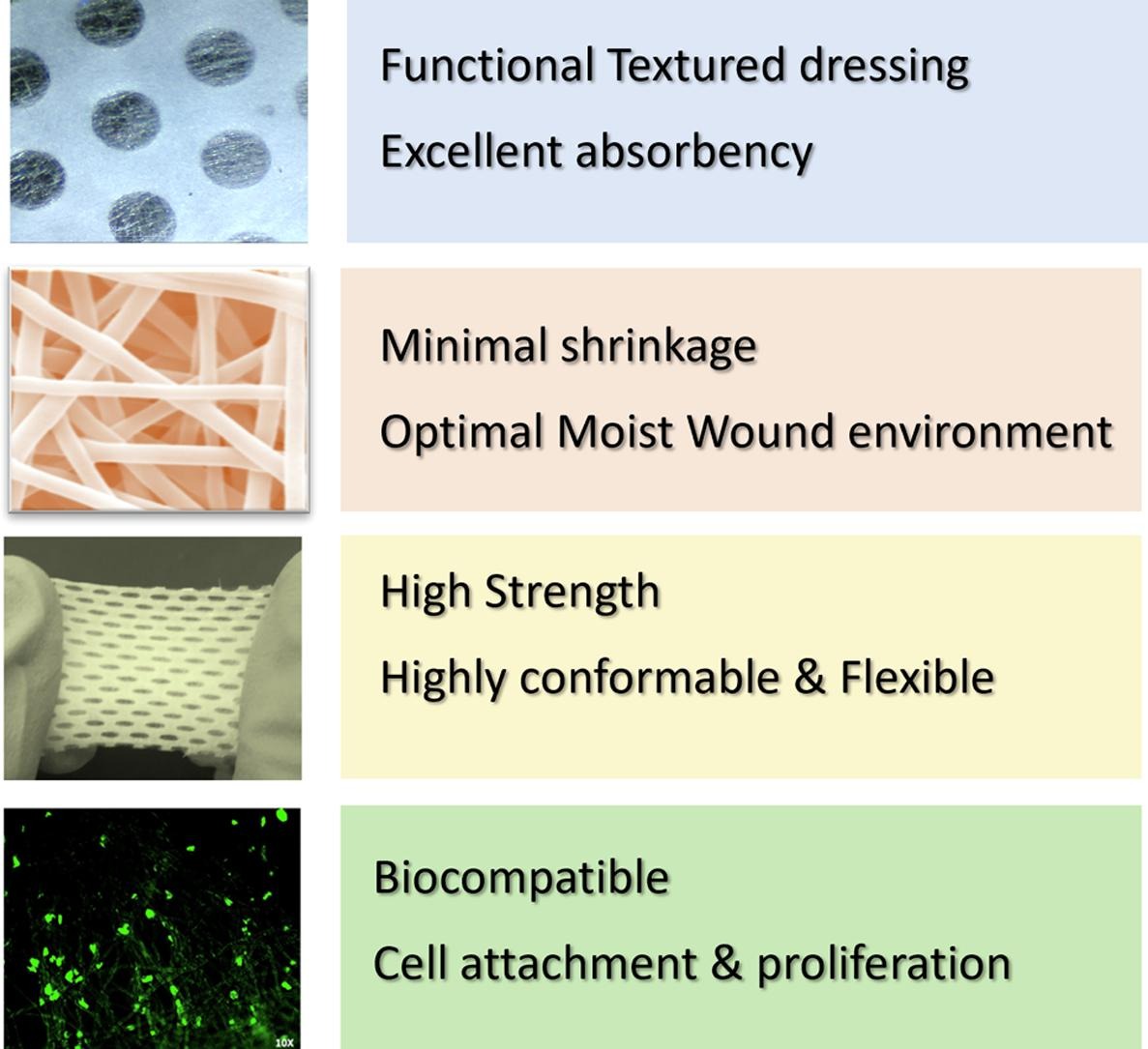Università degli Studi di Pavia - unipv.it
BioFiber: An advanced fibrous textured dressing to manage exudate in severe wounds
Biofiber is a new generation of highly absorbent, and textured bandage with patented fiber technology. Biofiber has a sophisticated texture that provides an optimum balance of moisture, flexibility, and conformability, and it has been developed with specific properties to treat complex injuries like burns. The dressing has been designed to be completely adaptable to human anatomy, and it can be fitted to any part of the body, adapting to all curves and jointures, as well as fitting the facial features. Prototypes of PLA-PCL-based textured bandages were developed by electrospinning, characterized, and evaluated for complex wound care. The texture is both esthetic and functional; fibers were uniformly sized (2.2 ± 0.8 and 4.5 ± 0.3 µm) and well interconnected. The texture facilitates vertical absorption of exudate up to 2.5 g/g of bandage, and the high contact angle values (120 – 100°) create an optimum balance of moisture for the healing process. The textured prototypes turned out to be extremely stable; no sign of bandage debris was found by the standard test, BS EN 13726–1.7. In addition, the round texture (3R) showed improvements in tensile strength (0.27 ± 0.019 MPa), ultimate tensile strength (0.83 ± 0.05 MPa) with higher breaking point (0.91 ± 0.05 MPa) compared to control (Mepilex Lite®). The amount of albumin (BSA) and Fibrinogen (Fb) adhered on textured fiber prototypes was calculated by BCA Assay, all prototypes demonstrated strong BSA (ranging from 81.66 ± 8.93 to 182.73 ± 2.07 μg protein/mg dressing) and enhanced Fb shielding (ranging from 108.25 ± 7.3 to 238.12 ± 17.76 μg protein/mg dressing). Their MVTR values ranged from 2313.27 ± 58.86 to 2603.33 ± 50.41 g/m2· day and vertical wicking heights were between 24.6 ± 2.5 and 29.3 ± 4.1 mm; biological tests demonstrated good compatibility of prototypes (cell vitality > 70 %), percentage of cells attachment was in-between 114 and 225 %. The extent of attachment depends on texture, differing topographical patterns presented higher attachment compared with both CTR + and 1P prototype (no texture). Cells were growth on textured fiber prototypes, and the extent of proliferation depend on incubation time.

